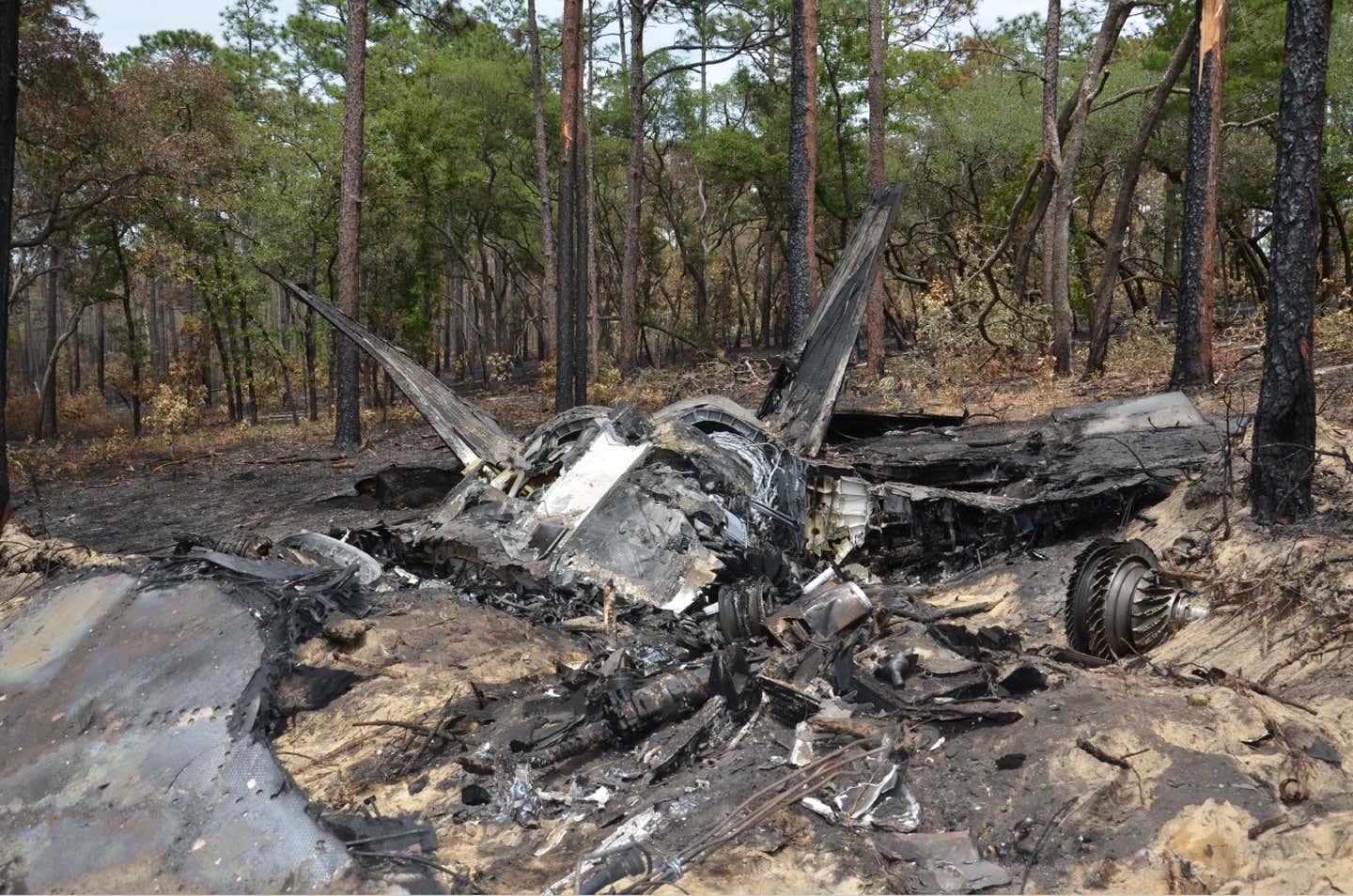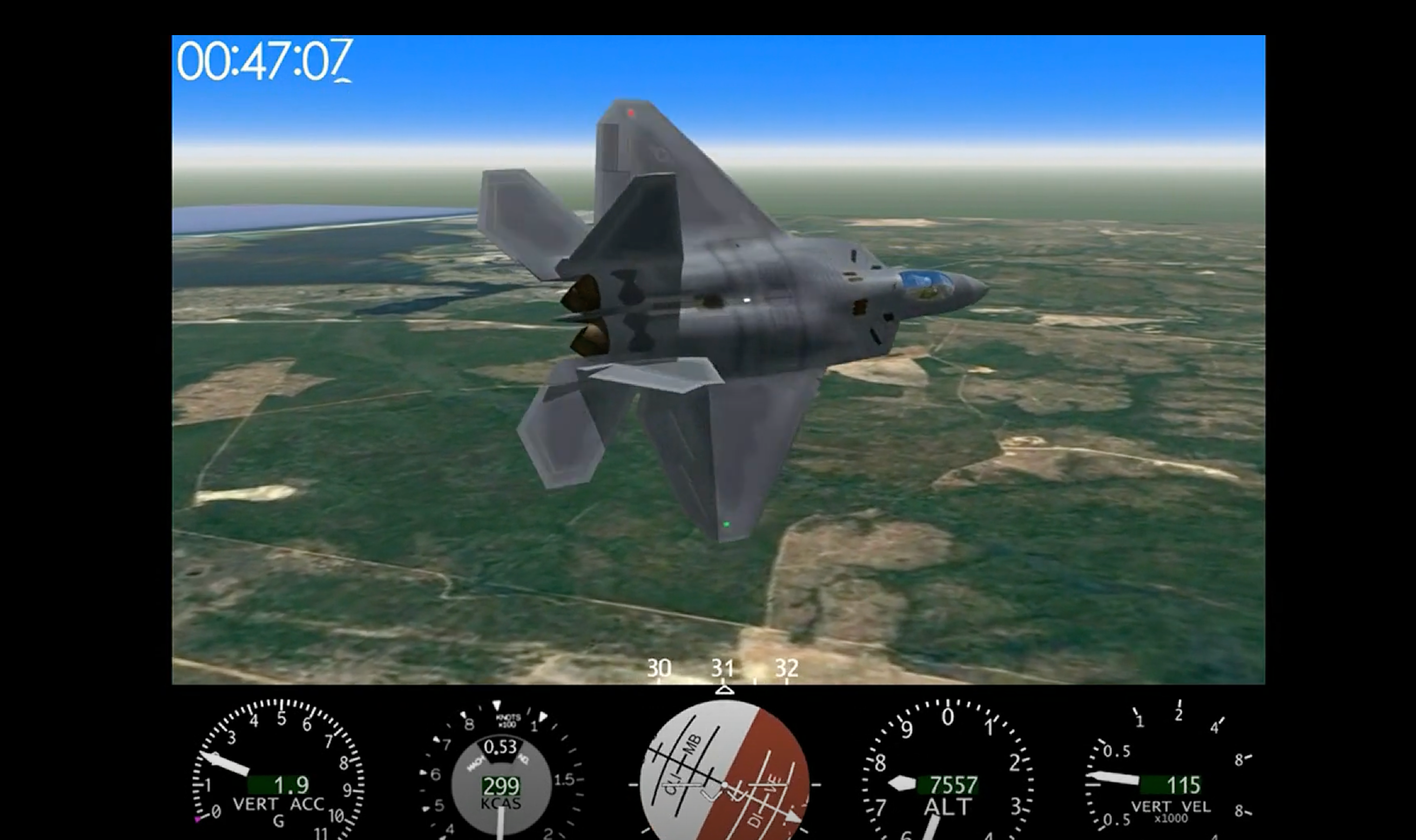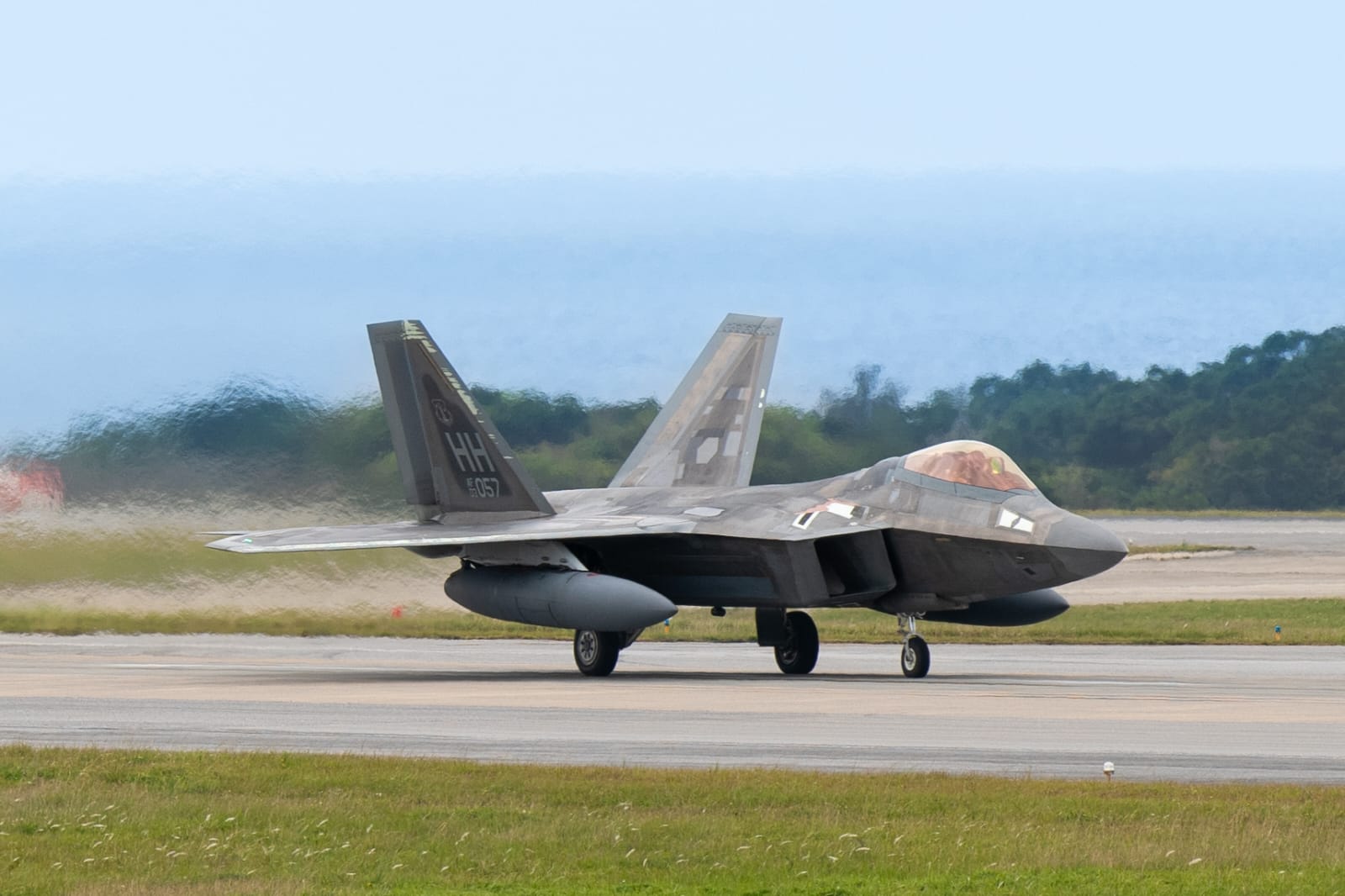US stealth fighters remain the backbone of the American military. The ‘fast and furious’ F-22 Raptor is still considered the fiercest warplane in the world, while the F-35 is known as a flying computer and is the most sought-after aircraft globally.
However, in May 2020, the US lost both the F-22 and F-35 in a span of four days and avoided a mid-air collision between both stealth fighters. The toll could have reached four in four days.
Documents released through the Freedom of Information Act revealed noteworthy information regarding a US Air Force F-22 Raptor crash that occurred on 15 May 2020.
According to reports, during a mission to inspect the crash site of an F-22, a potential collision between an F-22 Raptor and an F-35 Lightning II was averted.
Backdrop: F-22 Crash
On 15 May 2020, a massive air combat training exercise with six F-35s, three F-22s, and four F-16Cs was to take place at the Eglin Air Force Base.

The F-22 Raptor that crashed was being flown by a captain serving as the 43rd Fighter Squadron’s assistant operations director. The aircraft left the base using the callsign Hornet 1.
The pilot noticed the first sign of the problem as soon as the Raptor lifted off a cockpit warning light had started flashing. Since no obvious problems were visible, he continued. However, at an altitude of just about 50 feet, the aircraft began to roll to the left without being commanded to do so.
The pilot, suspecting a potential flame-out in the left engine, throttled back both the Raptor’s Pratt & Whitney F119 turbofan engines and leveled out. In the meantime, his wingman briefly inspected the engine for any apparent issues.
Nothing seemed to be amiss.
Then, the Raptor’s nose pointed up about 45 degrees toward the sky. A warning message indicating degraded air data flashed on the screen. The jet again rolled to the left and then, without any warning, pitched down.
The wingman said this left the Raptor “almost inverted.”
But the pilot, yet again, managed to regain control and decided to continue the exercise.
Then, the third alert popped up, informing the pilot that g-forces were stressing the plane too much. He decided to attempt to safely put down the F-22 by burning off fuel on the way back to the ground, hoping to land on the longest runway.
“As I passed 10,000 feet, the jet began to have uncontrollable tendencies again … a barrel-roll type feel,” the pilot noted. “It took a majority of the pressure I had available in my right arm to keep the airplane in level flight, and then, at that point, I could no longer turn left.”
By this time, it was quite apparent that the cockpit display was showing incorrect altitude and speed values in comparison to what his wingman was reporting. It was at this juncture that the pilot decided to eject. Post his ejection, the Raptor spiraled to the ground, ending up in a blaze at the Eglin Training Range.
The pilot landed in shrubbery about 100 yards from a nearby road. He then hitched a ride in a government-owned vehicle to return to Eglin.

Cause and Effect
It was determined that the root cause of the accident was a maintenance error made after the aircraft was washed. This implies that the set procedure was not followed properly by one or more ground crew members.
The USAF said that this error “impacted control inputs transmitted to the aircraft.” However, no further details have been provided.
It is still unclear whether changes were made to the maintenance procedure. There is no information regarding any potential remedial work carried out on any other aircraft.
This crash left the Air Force one less Raptor. Each jet costs approximately $143 million, and production has ceased since 2011. In this context, the loss of an aircraft is bound to have a significant impact.
Several F-22s stationed at Tyndall Air Force Base in Florida were also damaged during the 2018 Hurricane Michael. Several Raptors were transferred to Eglin because the Tyndall base suffered extensive damage during the storm.
F-22, F-35 Collision Averted
After the F-22 pilot ejected, F-35s from the same training exercise made their way to the scene with the objective of relaying the coordinates to rescuers. They had planned on remaining in the area to oversee the recovery.
However, the F-35s coordinating the rescue began to run low on fuel and left. In doing so, they almost collided with F-22s, and the report described the situation as “saturated and fairly dangerous.”
The number of jets involved in this close call is still unclear. Although, almost all the jets that were a part of the training exercise would have still been airborne over the range at the time.

18 Wing Public Affairs/US Air Force.
Four days later, there was an accident involving another F-35. This one, though, wasn’t lucky enough to escape unscathed. The May 19 crash of an F-35A Lightning II at the Eglin Base was caused by the pilot trying to land at a really high speed.
There was also a previously unknown flight control logic glitch that rendered the aircraft’s tail unresponsive.
The USAF’s report regarding the incident, posted online on September 30, listed multiple pilot mistakes that investigators believe significantly contributed to the crash. They found the pilot to be fatigued, which resulted in “experienced cognitive degradation.”
A misaligned helmet-mounted display also distracted the pilot at a critical point in the flight. Although the pilot in this crash ejected successfully, they sustained non-life-threatening injuries.
Since this was the second crash in 4 days at the Eglin base, it alarmed the base leadership and prompted them to temporarily put flights on hold to focus on safety.
- Contact EurAsian Times at editor (at) eurasiantimes.com
- Follow EurAsian Times on Google News




